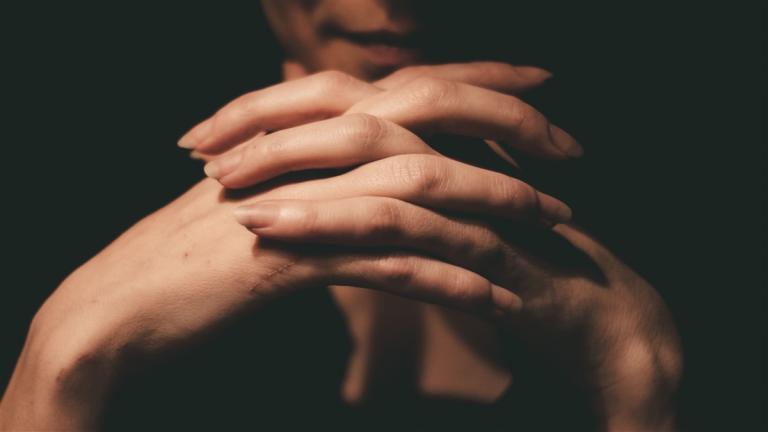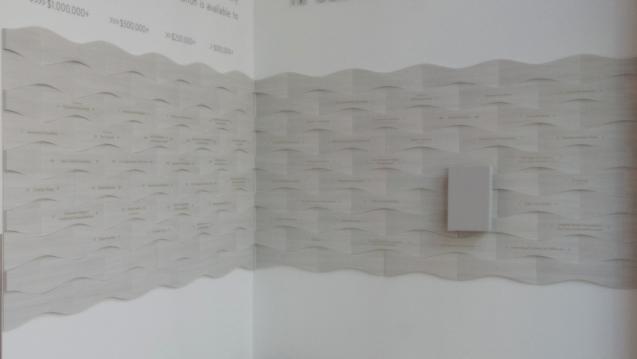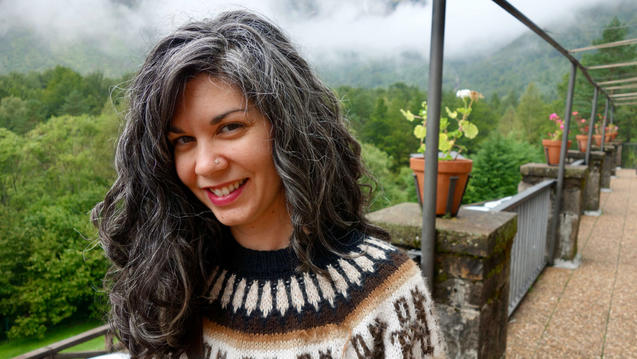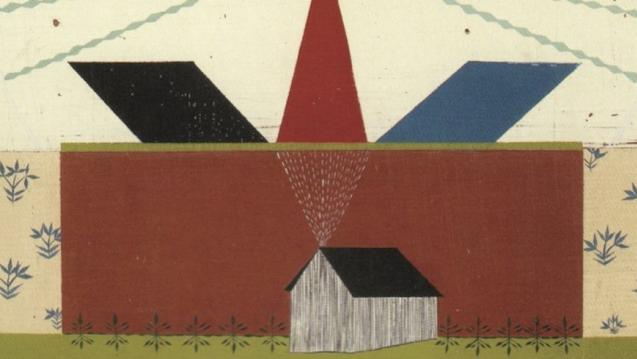
Focus on Abortion
Sharing Stories With Roslyn Banish
Last week I had the opportunity to sit down with Roslyn Banish, whose exhibition Focus on Abortion: Americans Share Their Stories is on view in the third-floor gallery at CIIS through the end of June 2019.
Each participant in Roslyn’s ongoing project is close to the experience of abortion; most have had one. As with her work on living with HIV and AIDS, all of her subjects are represented by a photographic portrait and a first-person narrative. The subjects of these portraits come from diverse socioeconomic backgrounds and generations. They live in urban, suburban, and rural areas throughout America, and together they provide a broad, multidimensional, and poignant picture of abortion in our country. Together these stories—which resist easy categorization—make a powerful argument: that individuals deserve the right to make their own decisions about their health and well-being, to decide if and when to have a child.
Roslyn Banish, photographer and author, uses photographs and text to explore human issues. Her work has been exhibited in England and the United States. Published works are referenced on https://focusonabortion.org/.
Let’s start with where you started, where this project began for you.
More than three years ago, a good friend and I were chatting. She mentioned that from her point of view, access to abortion was going down the tubes because people were not openly telling their stories, so the stigma continued in silence. This is a woman who, along with her husband up at UCSF, has created and continues to develop a program to train doctors and residents in abortion care and contraception.
As soon as she said this— it was way before the 2016 election—I realized that I wanted to do it! I had previously done work about people living with HIV and AIDS that was published as a book and traveled as an exhibition. I photographed people living with HIV and AIDS who were willing to talk about it, and I combined that with a portrait of them. That body of work included people from across the country, different demographics to make the point that it's not just the folks that you think that get AIDS in our country, but it’s all kinds of people, including heterosexual people, people who use drugs, etc.
So when my friend talked about the need for abortion stories, I realized, “Yes, I want to do that.” That was the beginning. Since then I’ve been working, identifying which populations need to tell their stories, hoping to get volunteers, and spending a lot of time putting this all together.
How do you get volunteers?
The people who volunteer to be in my project really come through the kindness of others. I always start out with my friends, but that's a very limited demographic. Then I just started talking to generous people who are running nonprofits and organizations that work with reproductive justice, abortion care, and everything associated with it.
A number of organizations both in the Bay Area and beyond have been so instrumental in introducing me or pointing me in the right direction to seek volunteers. I couldn’t have done it without them.
I think it always takes a very personal introduction for somebody to feel comfortable being in a project that is so personal. It’s beyond putting up a notice saying, “I’m looking for volunteers.” It really takes somebody to say, “This is a good project. Roslyn’s OK. You can trust her.”
Given the culture that we live in, most people don’t want to share their stories. The people in my project are the people who do. It’s self-selecting in that way, and then there are some really wonderful surprises. One woman in the exhibition, Lani, came up to me at an annual fundraising luncheon at NARAL, and said “I just heard about your project. I want to be in it.” So that was somebody who self-recruited, which was great. But usually that doesn’t happen. Usually it takes a lot of legwork and multiple introductions, and one thing leads to another.
What in the project has challenged your own assumptions about the abortion narrative or the larger politics of abortion? Has there been anything that surprised you?
I'm pretty overwhelmed with the degree that people in the year 2019 are suffering from shame and guilt over abortion. In so many ways our society has advanced, but clearly whatever we’ve all grown up with about abortion, I think it’s very hard for many, many people to be unshackled.
I’ll give you an example. Someone who’s not in this particular exhibit got pregnant when she was 12 years old. She was so young. She barely knew how babies were made, and her mother and father who got her an abortion said to her, “Don’t ever, ever talk about this with anybody, including the man you might be married to one day.” She held this, what she viewed as a terrible secret until she was 40 years old. And what allowed her to tell her story was she made a friend in church, and they were going for a walk and the church friend said to her, “I’ve had an abortion.” It somehow came up, which inspired the woman I interviewed to say, “Oh, I did too.” And it was the first time in her life that she realized that she wasn’t the only person on earth who had had an abortion. She’s since become an activist. She is an escort to a clinic. She told her husband and her teenage sons, and of course everybody embraced her.
In terms of your question—what has surprised me—I’m really surprised at the degree to which this weighs on so many people in our society. And the other thing I’ve noticed is the way the role of mothers comes up a lot. That surprised me. In many of the narratives, people say to me, “I really wanted to tell my mother that I had an abortion. I wanted to tell her when I got pregnant. I just couldn’t do it. I would be such a disappointment to her if she knew.”
And then often later on when they finally did tell their mothers, their mothers would embrace their daughter and say, “Oh, I wish you would’ve told me. I had an abortion when I was 20,” or “Your grandmother died of an abortion, and I never told you that.” There are families going through many generations of abortion stories, but for the most part they haven’t been told. So I think when the stories have come out in this latest generation, it’s pretty interesting.
This brings me to my last question, which is about the power of narrative to change our politics. We live in a time when the debate over abortion is polarized and polarizing. The strategy you’re using is not dissimilar from that of the gay community coming out to family and friends, making visible to folks across the country that we are your family, friends, teachers, pastors, etc. Of changing our politics by becoming visible, by telling our stories out loud.
I’m a believer that telling your story out loud allows somebody to wrap their head around that story and maybe learn something, maybe develop empathy, maybe realize it perhaps wasn’t an easy decision. It often wasn’t black or white. There are all kinds of nuances. But a full story, which will appear when this work is in book form, because the interviews are quite extensive, illuminates how complicated most people’s lives are, and they don’t do things lightly. So, I think I’m hoping for empathy, that viewers learn something that you didn’t know about people who have chosen abortion.
That could change sensibility, could change all kinds of things, maybe inspiring them to share their own story. I just think that it’s a way of caring about other people, and you have to care about other people to care about individuals being able to control their own reproductive lives. I want people to care.
I know, maybe because I’m a photographer, as you are, and a visual person, that when I see a story and it comes with a photograph of that person telling a story, it really allows me to get involved in that story in a way that just text wouldn’t. So that’s really why I’m combining the two media. This is an experiment, but I’m combining the audio files in this exhibition with interviewees’ actual voices so that you can hear what they sound like. You can hear their voice, their intonation, all kinds of things, which plain text doesn't really allow for.
Fortunately, I think storytellers are having a new place in our society, our country, starting with the StoryCorps.
The person whose story you are listening to is different than you. Hopefully, when you hear one of these stories, you’re going to recognize a little bit of yourself in someone you thought different. I’ve always believed in the ability of a story authentically told to build bridges of understanding between people, to recognize our shared humanity. —David Isay, Founder, StoryCorps



